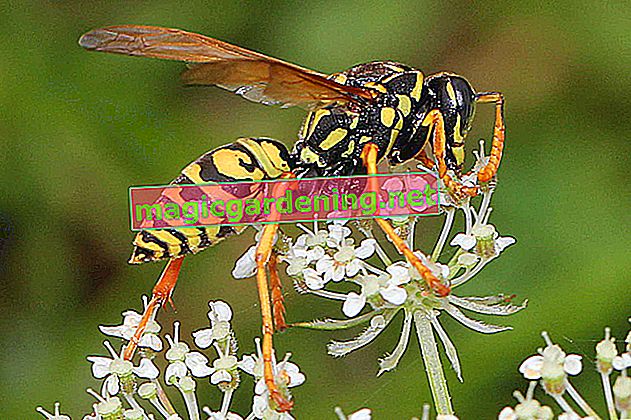
Shrike and soft-eater as wasp devourers
Using natural processes for wasp control is praiseworthy and definitely recommended. Because on the one hand you contribute to the general biodiversity and on the other hand you can look forward to a more stable ecological balance, more abundance of flowers and rare animal visitors in your own garden in the long term.
also read
- Do wasps actually eat aphids too?
- Do wasps also pollinate flowers?
- Do wasps help against boxwood moth?
Wasps also have a beneficial function in their own way as pollinators and pest killers. In large numbers, however, they can really disturb the peace in the garden.
Attracting natural predators can be especially helpful in the long run. Because firstly, a plant-based redesign of the garden may be necessary and secondly, plants and animals often need some time to adapt to new living conditions and offers. So patience is required.
Natural predators of wasps are mainly birds from the groups of stranglers and soft-eaters. These include, for example:
- Red backs
- Bee-eater
- Honey buzzard
- Titmice
- Woodpeckers
Red-backed killer, bee-eater and honey buzzard are extremely effective wasp killers - because, as their name partly suggests, they specialize in biting insects. Of all wasp-destroying bird species, they are also the ones that eat adult wasps. The others, i.e. tits and woodpeckers, are after the larvae. To get to them, they break open wasp nests and get the brood from the brood chambers.
Tits and woodpeckers cannot really help in acutely decimating an existing wasp plague, but rather in prevention. Red-backed killer, bee-eater and honey buzzards are, however, they are rather rare visitors in the garden.
To allow woodpeckers, red-backed killer, bee-eater, honey buzzards and titmice to work specifically against wasps, you should make the garden inviting for them. This is best done by offering species-specific breeding opportunities. Red-backed red backs and titmice in particular are doing a favor in this regard with dense hedges that are as thorny as possible. The birds also welcome drinking and bathing facilities in the form of a garden pond or a trough. Cuttings from trees and shrubs can be valuable building material for nesting sites on open compost heaps.








